As an Amazon Associate I earn from qualifying purchases.
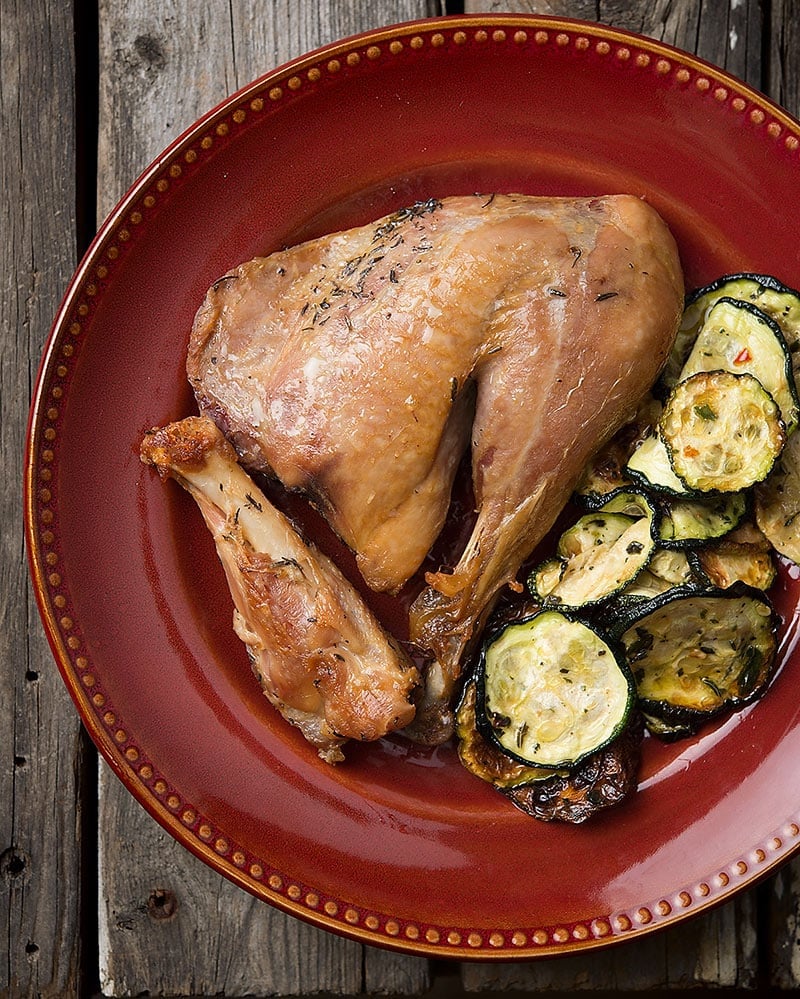
Many of you know about duck confit, pronounced “con-fee.” It’s a classic French method of slightly curing meat, then poaching it gently in fat until it is meltingly tender. With ducks or geese, it’s a natural: I’ve confited domesticated duck legs with only the fat on the legs themselves — no added fat needed!
Upland game birds, however, being lean, require special care.
You should know that making pheasant confit takes hours, or even days if you are looking to preserve the meat for months. So why bother with it? Because the end result is so wonderful you will change your perspective on eating pheasants: Done this way, the legs and thighs of a ringneck are far better eating than the breast meat. Really.
Here’s why. Start by thinking about people for a moment: The older we get, the more interesting we are. Talking to an 18-year-old is not nearly the same experience as drinking whisky with someone in her 50s, right?
Well pheasants are the same way. The meat of an old rooster, which can be several years old, will be way more flavorful and memorable than the legs of a domestic chicken, which is typically less than 2 months old.
But in this case, as in most cases, flavor comes at a price. Sinew. Tendons. Tendrils of tissue so tough you can use them as dental floss. It’s as if all that deliciousness is imprisoned by those sinews. Confit is a way to deal with this.
By slowly cooking the legs and thighs, you break down an awful lot of connective tissue. By cooking them in fat or oil, and not a broth, you infuse a normally über-lean bird with luxurious fat. Not a bad thing to my mind.
Still, I am not going to lie to you: Nothing on this earth will break those tendons down completely. That means the legs of pheasants and turkeys (not so much with quail, partridges or grouse) will still be best eaten shredded off the bone. But fear not. Serve the thighs in one piece and shred the leg meat and put it into…
…well anything. A bitter green salad is a nice choice, but then so is a taco. Or you can shred, reform into patties and make into “pheasant confit cakes” that are so good you will wonder why on God’s Green Acre you have not saved the legs from your pheasants before. The possibilities are myriad.
A word on the salt. You will need to measure your meat here, as the salt is added in proportion to its weight. Weigh your legs and wings in grams and then measure out 2 percent of that weight in sea salt or kosher salt. This method of curing will prevent your pheasant from getting too salty no matter how long it is in the cure.
Your best bet is to massage the salt and spices into the meat, then vacuum seal it and set it in the fridge for a few days before proceeding.
Pheasant Confit
Ingredients
- 6 legs and thighs of pheasants, grouse, quail or partridges
- kosher salt (see above)
- 1 tablespoon dried thyme
- 1 tablespoon fresh ground black pepper
- Zest of a lemon, minced (optional)
- 2 bay leaves (optional)
- 1 cup olive oil, lard or butter
Instructions
- This recipe works best with a vacuum sealer. If you don’t have one, you should get one, as they are endlessly useful. But alternative directions are at the end. Mix the salt, thyme, black pepper and lemon zest together. Pack the pheasant legs with the mixture. Press it into the skin and exposed meat, and make sure every part has some on it. Refrigerate for at least 6 hours, and up to three days.
- When you are done curing the legs, rinse them off, then pat dry with paper towels. Put on a rack to dry further while you make the vac-bags. Make two vacuum bags each large enough to hold the legs in one layer. Put a little butter, lard or oil into the bottom of each; I add about 1/4 cup. Add the pheasant legs and the bay leaves, then divvy up the rest of the fat between the two bags.
- Seal the bags and and place in a large pot (the largest you have) two-thirds filled with water that is somewhere around 170°F to 180°F, which is below a simmer; you need a large pot to keep the temperature stable - the smaller the pot, the faster the water temperature will change. Poach the legs for 4 to 8 hours, flipping every half hour or so if they float. Young, tender birds (or pen-raised birds) will need only 4 hours, old pheasants might need the full eight hours.
- Remove the bags from the water and plunge them into a large bowl of ice water. When they’re cool, store in the fridge.
- When you are ready to eat your confit, you will probably want to crisp it up. You can sear it in a pan, but that method spatters a lot. I prefer to roast the leg/thighs, skin side up, in a pan in a 400°F oven. No need to preheat the oven, just pop in the legs and cook until it is as crispy as you like, anywhere from 15 to 45 minutes.
IF YOU DON’T HAVE A VACUUM SEALER:
- Rinse the cure off as above, then pat dry very, very well.
- Totally submerge in oil — you will need 4 to 5 cups — and put, uncovered, in an oven set on “warm,” or not hotter than 200°F. Alternatively, you can do this on a stovetop with a weak burner set on low, or with a flame tamer. Watch that the oil never sizzles. Cooking time will be about the same. When you are done, filter the oil through cheesecloth -- you can use it again.
Notes
Nutrition
Nutrition information is automatically calculated, so should only be used as an approximation.

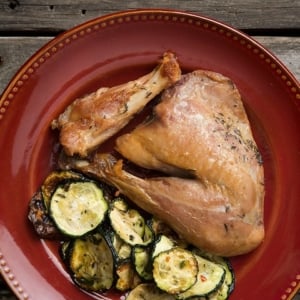
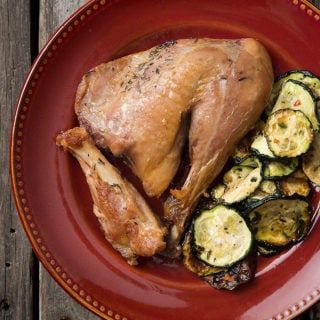


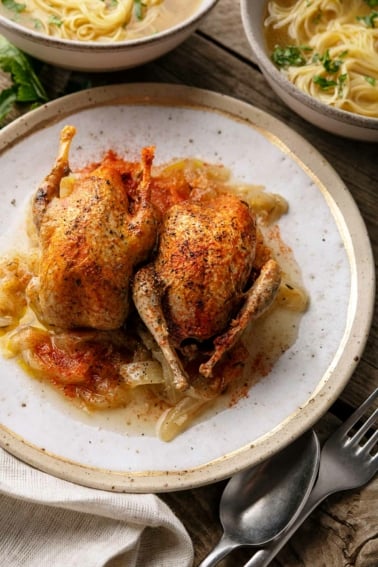
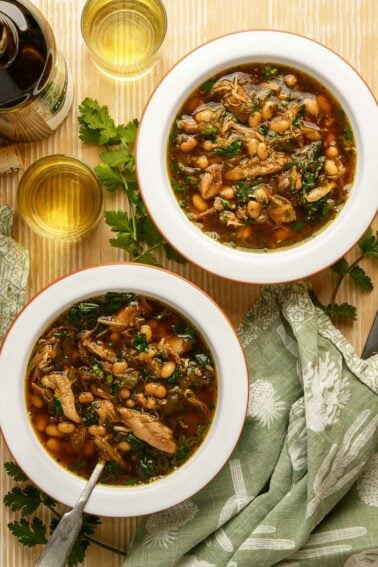
Do you have a recipe for the pheasant confit cakes you mentioned?
I’ve always taken out the pheasant breasts and thrown the rest away. If I can make myself find ways like this to use the legs and thighs, I’ll feel a lot better. It’ll be so rewarding to use more of the bird. Thanks for the recipe!
Great basic confit recipe. Simple but superb. I save up as many pheasant legs and thighs as I can for this every season!
Confit of any type is awesome
We were so happy with the results of this! Like Andrew commented, ours were skin off and I cured them for a day, so it ended up being quite salty but it was perfect in risotto with roasted mushrooms, and on pizza. We happened to have duck fat, so I used that as my fat, and I did it on the stove top. I will be making this recipe again and again – thank you for the recipe!
Used the legs of my last two pheasants. They were already skin off. Should have leaned on the short side of cure time. Lesson for next year as it was a little saltier than I wanted. With the sous vide though the cooking time and doneness was perfect.
Hank, I hope you don’t mind an off-site link in your comment section – I thought it might be worth sharing the classic immersion bag trick for sous vide Kenji at Serious Eats illustrates very well: https://www.seriouseats.com/2016/08/how-to-seal-food-airtight-without-vacuum-sealer-water-displacement-method.html
Hank,
I’ve been confiting pheasants for years now, After I shot a bird I can usually pluck the leg/thigh areas in about 5 minutes before starting to hunt again. Also many of the guys I hunt with only take the breasts and give me their leg/thighs.
I find the conventional process works well for me, I salt up to 24 leg/though pieces in a large SS bowl and then confit in a very large Le Creuset pot with duck fat for 6 hours or so at 170-180? for 5-6 hours. I then vacuum pack 2-4 pieces for freezing.
Rendered duck fat can be obtained for about $25/gal and, if strained and froze, be reused 5-6 times.
I made the mistake of bring a bunch of this to a hunting dinner, now my buddies keep their legs.
I found you just in time. I kind of invented my own recipe for skin-off pheasant legs. Using Schezuan spices for a rub, wait in frig overnight, into the oven with duck fat to cover. I think the oven was too high, over 200. Then I found your post and turned it down to 180, but after 5 hours. I like the salad idea. Now for skinless breasts. I bought a bunch of chicken thighs. My plan is to use the chicken skin wrapped around the pheasant breasts and fry them quickly. What do you think?
Got the guinea hen curing in thefridge right now.
rabbits; for some reason especially the front legs
SBW
What a great recipe! I’ve been wanting to try to confit something, but it seemed really intimidating. I have 9 duck breasts poaching on the stove using your method RIGHT NOW – can’t wait to try them! Thanks for the great recipe / technique!
Melanie: Yep. Those are my Sicilian sun-dried zucchini slices…
Will and Erika: Yes, it’s worth it, although it will not be as good. Skin = deliciousness.
Chet: I’ve done it a couple times. Works great with shoulder.
I wish I had read this earlier, made 2 ducks today and both were so tough, though I used the same recipe I always do. Maybe they were old ducks, because they were huge Mallards. Next time, I’ll do this for sure.
I’ve confit domestic ducks on several occasions with fantastic results and I used a recipe from Charcuterie to confit a bone in fresh pork ham. It was delicious. I’ve often considered applying these techniques to a leg of venison or maybe a venison shoulder roast. Do you have any experience with venison confit? I’ll give the upland game birds a try.
Can’t wait to try. I bet it works.
Hank – I also have that question, but for the skinless legs of Snows and Canadas (the legs are from breasted birds that were never plucked). Maybe coat in panko and fry?
Hank, will this still be worth doing with skinless thighs and legs? The majority of pheasant in my freezer has been shot by my pops and he doesn’t pluck his birdies…… thanks!
Perfect timing! I ordered a pheasant yesterday that I am picking up at the farmers’ market on Saturday.
Sounds great, Hank. BTW – those look like dehydrated zucchini slices as the side dish? Sauteed with a little rosemary? Just curious..